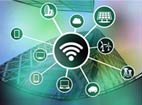The Internet of Things is poised to make major changes to enterprise infrastructure, not only to deal with staggering volumes of information but to foster the dynamic connectivity to, from and between legions of digital devices.
While much of the load will be handled by dedicated analytics engines and so-called “data lakes,” the impact will be felt on the traditional data center as well, given that the insights gleaned from all this information must be incorporated into ongoing digital processes.
So exactly how will the data center need to evolve in the IoT era?
According to CIO Review, the key change will be the transition from largely transactional support to real-time data analysis and batch processing. This will be felt most keenly in storage, where the need to maintain data accuracy propels the need to weed out incomplete, duplicate and incorrect information. At the same time, computational infrastructure must incorporate both the scale and speed to accommodate the demands of IoT-generated workflows, and wide-area networking will require upgrades to handle data ingestion from literally millions of sources.
The IoT will also generate increased demand for advanced automation, say Level 3’s Michael Zody and vXchnge’s Joseph A. Mileo. The emerging smart data center will not only support the application demands of connected devices, but also establish and manage the various SaaS, PaaS and IaaS models to effectively support the necessary analytics processes. All of this has to happen in real time, of course, and with data volume and complexity beyond the capability of even an army of managers, automation will become as vital a tool in the connected data center as an engine is to an automobile.
But even as these changes are taking place in centralized data facilities, the IoT will push processing out to the edge, and even to the devices themselves, says IO COO Rich Crutchley. This Internet of Everything model will create a data operating environment that inhabits virtually everything around us, and perhaps even inside us, to the point that systems will have to become more transparent and ephemeral as the rationale for their creation emerges and subsides in the blink of an eye. Ultimately, this will produce data centers that are manufactured and deployed like transformers – fully converged computational boxes that are maintained with little or no direct oversight.
These changes to the data center will naturally require new skillsets among the IT workforce, according to FreeTools community leader Vidya Vasu. With automation taking on much of the day-to-day management, IT will need to wade ever deeper into the business side of the enterprise to more accurately devise and deploy the services that contribute the most to productivity. While this will undoubtedly result in lost jobs, those that remain will be more interesting and rewarding because they will incorporate the more creative aspects of digital architecture, analytics and service optimization.
The term “brave new world” is more than appropriate here. The changes being wrought by the IoT extend way beyond mere technology and data infrastructure into digital processes, business models, and perhaps the reworking of entire industries.
Whatever role the data center plays in this interconnected world, one thing is certain: It will be a leaner, more focused and significantly more autonomous entity than it is today.
Arthur Cole writes about infrastructure for IT Business Edge. Cole has been covering the high-tech media and computing industries for more than 20 years, having served as editor of TV Technology, Video Technology News, Internet News and Multimedia Weekly. His contributions have appeared in Communications Today and Enterprise Networking Planet and as web content for numerous high-tech clients like TwinStrata and Carpathia. Follow Art on Twitter @acole602.



